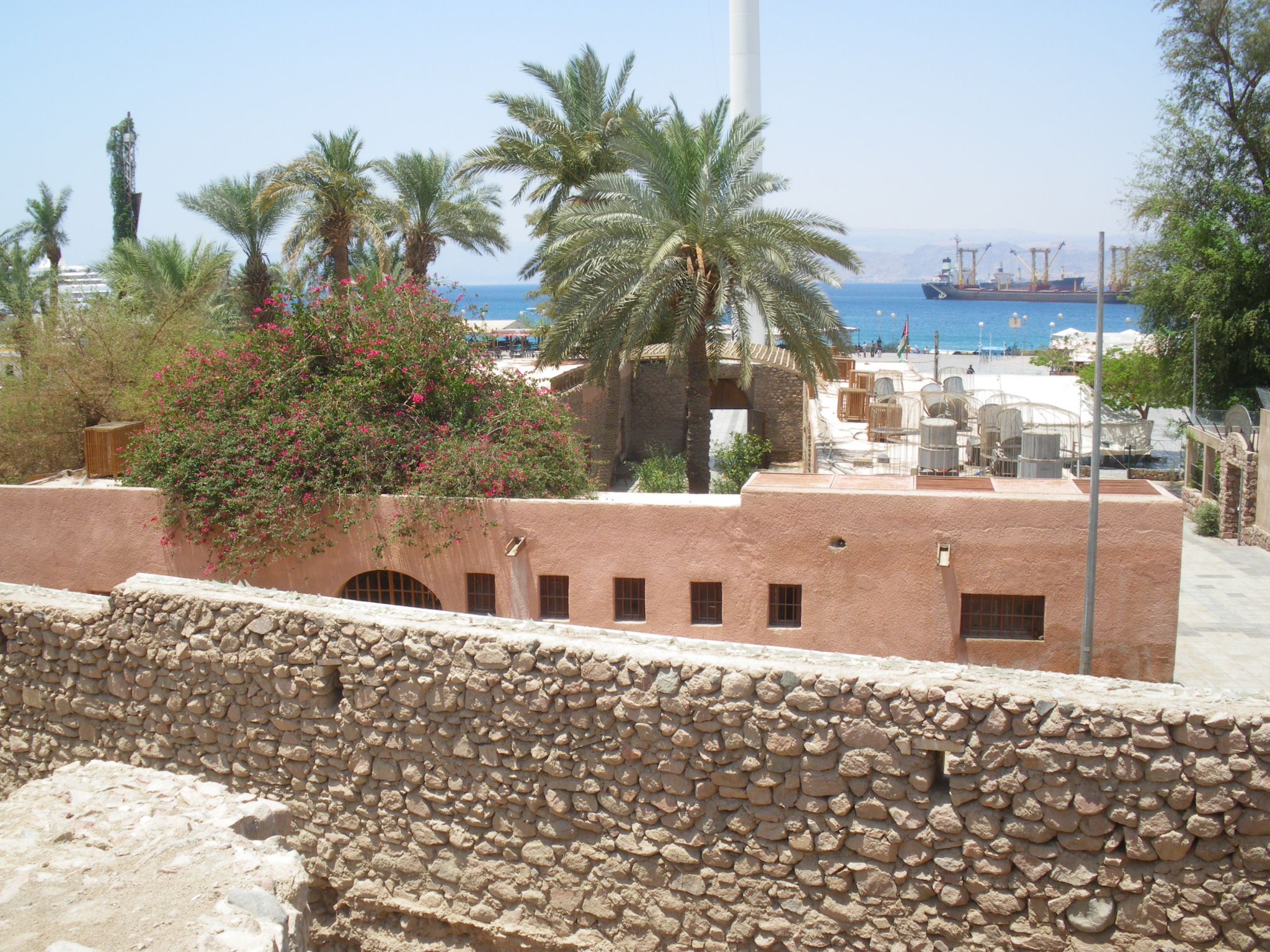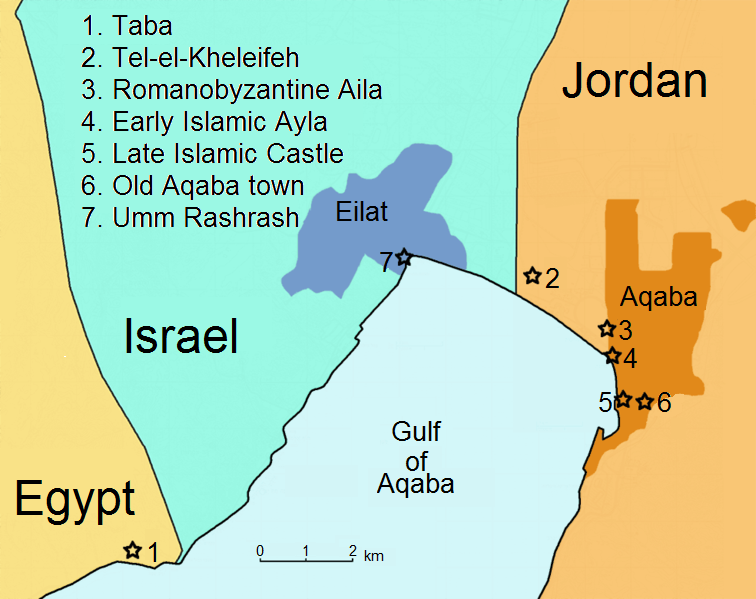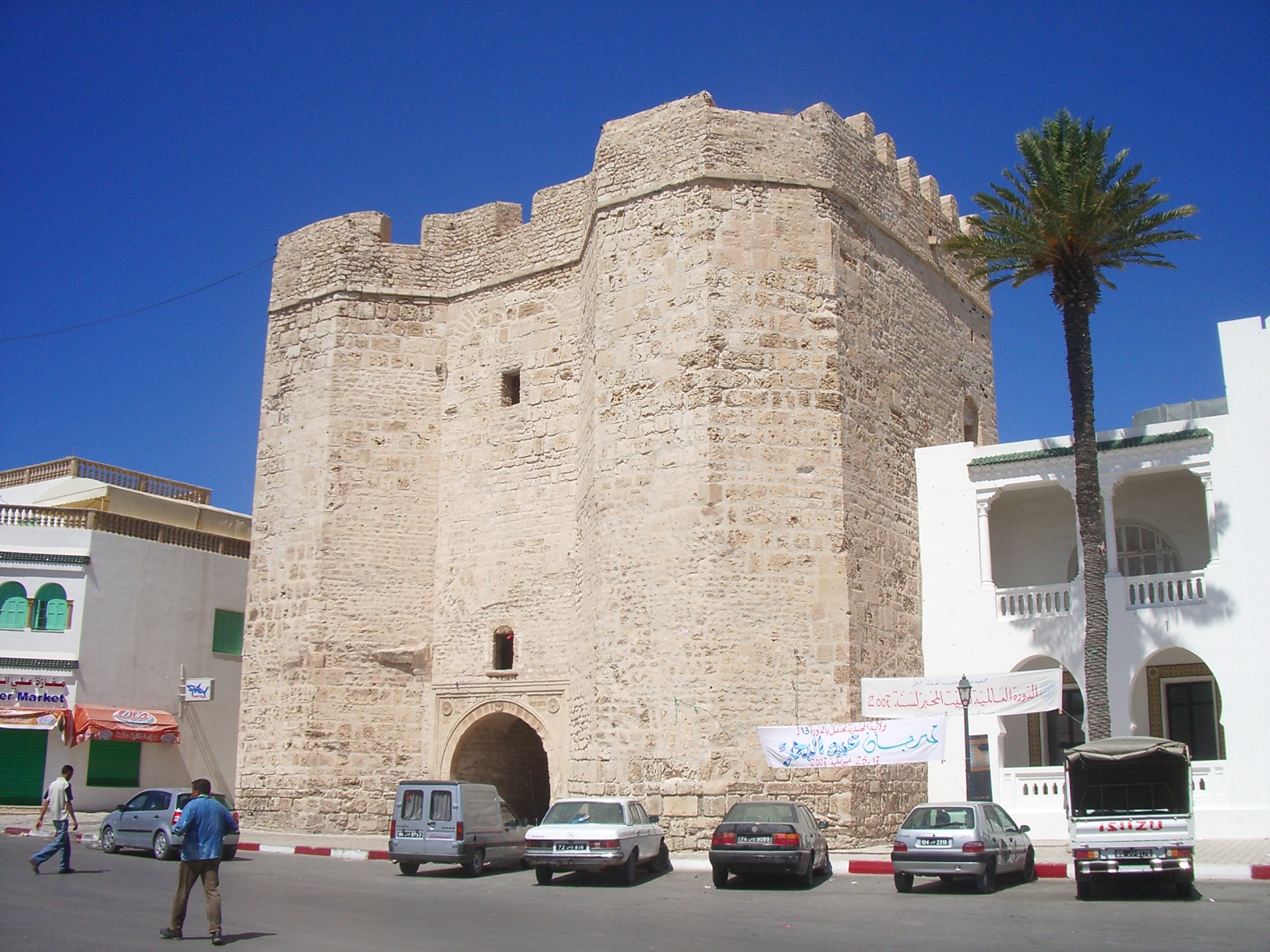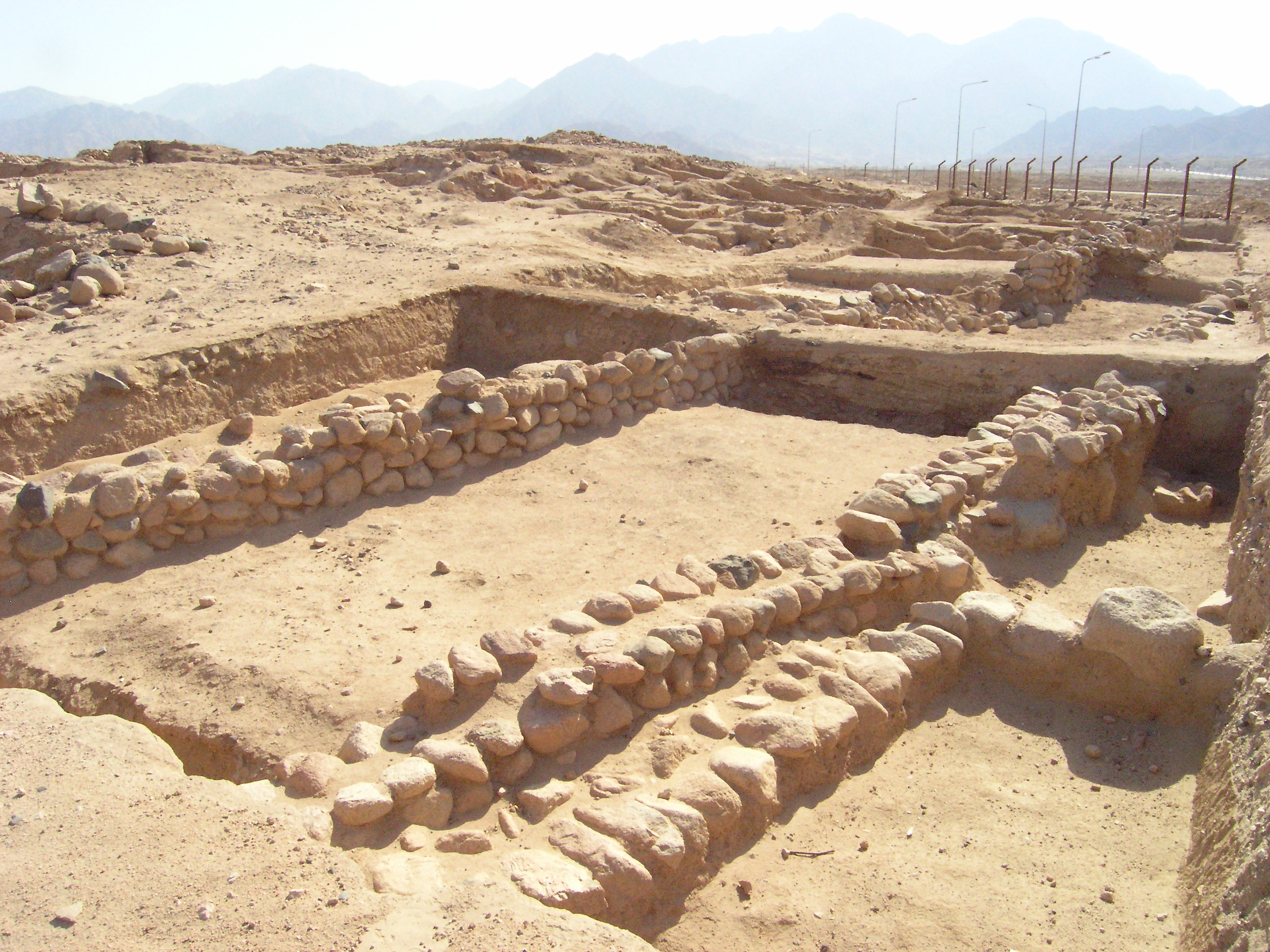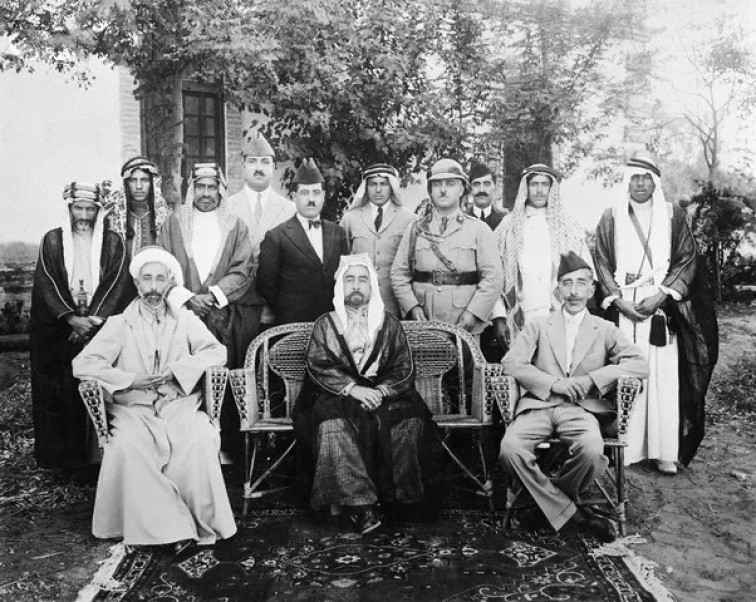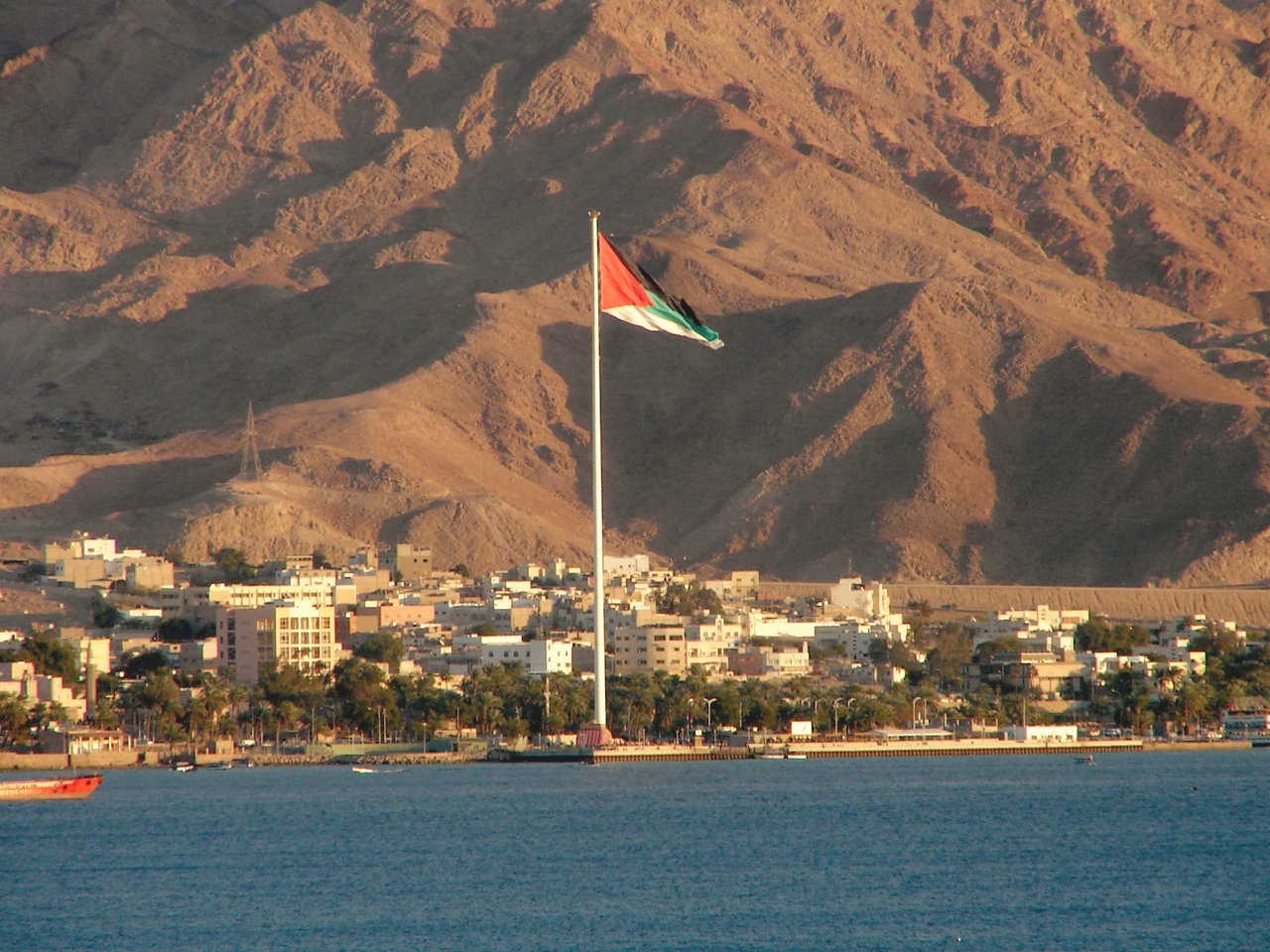|
Aqaba Archaeological Museum
Aqaba Archaeological Museum () is the official archaeological museum of the city of Aqaba in Jordan. Location The museum is located in the historical part of Aqaba, adjacent to the historic fort of Aqaba and near the Aqaba Flagpole. History The building that hosts the museum was the palace of Sharif Hussein Bin Ali, the founder of the Hashemite dynasty, and was built shortly after World War I in 1917. The museum was established in 1989 and was officially opened on January 1, 1990. Collection The museum houses Bronze Age artifacts that were recently discovered in the Tall Hujayrat Al-Ghuzlan archaeological site near Aqaba, dating back to 4000 BC. The discovery of the Tall Hujayrat al-Ghuzlan settlement provides an important proof that Aqaba is one of the oldest continuous settlements in the region that had a vibrant copper production. The museum also houses a collection of artifacts from the 7th to the early 12th century AD. Some of the most known pieces of the museum' ... [...More Info...] [...Related Items...] OR: [Wikipedia] [Google] [Baidu] |
Aqaba
Aqaba ( , ; , ) is the only coastal city in Jordan and the largest and most populous city on the Gulf of Aqaba. Situated in southernmost Jordan, Aqaba is the administrative center of the Aqaba Governorate. The city had a population of 148,398 in 2015 and a land area of . Aqaba has significant trade and tourism. The Port of Aqaba also serves other countries in the region. Aqaba's strategic location at the northeastern tip of the Red Sea between the continents of Asia and Africa has made its port important for thousands of years. The ancient city was called '' Elath'', known in Latin as ''Aela'') and in Arabic as ''Ayla''. Its strategic location and proximity to copper mines made it a regional hub for copper production and trade in the Chalcolithic period. Aela became a bishopric under Byzantine rule and later became a Latin Catholic titular see after Islamic conquest around AD 650, when it became known as ''Ayla''; the name ''Aqaba'' is late medieval. In the Great Ara ... [...More Info...] [...Related Items...] OR: [Wikipedia] [Google] [Baidu] |
World War I
World War I or the First World War (28 July 1914 – 11 November 1918), also known as the Great War, was a World war, global conflict between two coalitions: the Allies of World War I, Allies (or Entente) and the Central Powers. Fighting took place mainly in European theatre of World War I, Europe and the Middle Eastern theatre of World War I, Middle East, as well as in parts of African theatre of World War I, Africa and the Asian and Pacific theatre of World War I, Asia-Pacific, and in Europe was characterised by trench warfare; the widespread use of Artillery of World War I, artillery, machine guns, and Chemical weapons in World War I, chemical weapons (gas); and the introductions of Tanks in World War I, tanks and Aviation in World War I, aircraft. World War I was one of the List of wars by death toll, deadliest conflicts in history, resulting in an estimated World War I casualties, 10 million military dead and more than 20 million wounded, plus some 10 million civilian de ... [...More Info...] [...Related Items...] OR: [Wikipedia] [Google] [Baidu] |
Aqaba Governorate
Aqaba ( ''al-ʻAqabah'') is one of the governorates of Jordan, located south of Amman, capital of Jordan. Its capital is Aqaba. It is the fourth largest governorate in Jordan by area and is ranked 10th by population. Aqaba, the port at the Red Sea, plays an important role in the economic life of Jordan. Two of Jordan's top three tourist destinations lie in Aqaba Governorate, Wadi Rum, and the port city of Aqaba. The port is Jordan's most important import/export hub. The industrial port lies about 15 km to the south from the beaches and the Aqaba city center. Geography Aqaba Governorate lies in the south western tip of Jordan, it borders Ma'an Governorate from the east, Tafilah Governorate from the north, Saudi Arabia from the south, Israel from the west, and the Gulf of Aqaba from the southwest. There are two international crossing points in Aqaba Governorate, the Durra Border Crossing and Wadi Araba crossing. The Jordanian-Saudi Arabia, Saudi border originally ran a few ... [...More Info...] [...Related Items...] OR: [Wikipedia] [Google] [Baidu] |
Morocco
Morocco, officially the Kingdom of Morocco, is a country in the Maghreb region of North Africa. It has coastlines on the Mediterranean Sea to the north and the Atlantic Ocean to the west, and has land borders with Algeria to Algeria–Morocco border, the east, and the disputed territory of Western Sahara to Morocco–Western Sahara border, the south. Morocco also claims the Spain, Spanish Enclave and exclave, exclaves of Ceuta, Melilla and Peñón de Vélez de la Gomera, and several small Plazas de soberanía, Spanish-controlled islands off its coast. It has a population of approximately 37 million. Islam is both the official and predominant religion, while Arabic and Berber are the official languages. Additionally, French and the Moroccan dialect of Arabic are widely spoken. The culture of Morocco is a mix of Arab culture, Arab, Berbers, Berber, Culture of Africa, African and Culture of Europe, European cultures. Its capital is Rabat, while its largest city is Casablanca. Th ... [...More Info...] [...Related Items...] OR: [Wikipedia] [Google] [Baidu] |
Fatimides
The Fatimid dynasty () was an Arab dynasty that ruled the Fatimid Caliphate, between 909 and 1171 CE. Descended from Fatima and Ali, and adhering to Isma'ili Shi'ism, they held the Isma'ili imamate, and were regarded as the rightful leaders of the Muslim community. The line of Nizari Isma'ili imams, represented today by the Aga Khans, claims descent from a branch of the Fatimids. The Alavi Bohras, predominantly based in Vadodara, also claim descent from the Fatimids. The Fatimid dynasty emerged as the leaders of the clandestine early Isma'ili missionary movement () in the ninth century CE, ostensibly acting on behalf of a hidden imam, implied at the time to be Muhammad ibn Isma'il. The Isma'ili spread widely across the Islamic world, then ruled by the Abbasid Caliphate. In 899, the future first Fatimid caliph, Abdallah, proclaimed himself to be the expected imam, causing a rift in the Isma'ili as the Qarmatians, who did not recognize his imamate, split off. In the meantime, ... [...More Info...] [...Related Items...] OR: [Wikipedia] [Google] [Baidu] |
Tall Hujayrat Al-Ghuzlan
Tall Hujayrat Al-Ghuzlan is an archaeological site during the Chalcolithic period that lies 4 km north of modern-day Aqaba city in Jordan. Tall Hujayrat Al-Ghuzlan and the neighboring Tall Al-Magass site in Aqaba both have extensive evidence of significant copper production and trade in the region. Overview Archaeologists from University of Jordan discovered the site. They found human and animal depictions on the walls of a building, suggesting a religious site. The people who inhabited the site had developed an extensive water system for irrigating their crops (mostly grapes and wheat). Searchers also uncovered several different-sized clay pots, suggesting that copper production was a major industry in the region (the pots were possibly used in melting the copper and reshaping it). Scientific studies performed onsite revealed that it had undergone two earthquake An earthquakealso called a quake, tremor, or tembloris the shaking of the Earth's surface resulting fro ... [...More Info...] [...Related Items...] OR: [Wikipedia] [Google] [Baidu] |
Bronze Age
The Bronze Age () was a historical period characterised principally by the use of bronze tools and the development of complex urban societies, as well as the adoption of writing in some areas. The Bronze Age is the middle principal period of the three-age system, following the Stone Age and preceding the Iron Age. Conceived as a global era, the Bronze Age follows the Neolithic, with a transition period between the two known as the Chalcolithic. The final decades of the Bronze Age in the Mediterranean basin are often characterised as a period of widespread societal collapse known as the Late Bronze Age collapse (), although its severity and scope are debated among scholars. An ancient civilisation is deemed to be part of the Bronze Age if it either produced bronze by smelting its own copper and alloying it with tin, arsenic, or other metals, or traded other items for bronze from producing areas elsewhere. Bronze Age cultures were the first to History of writing, develop writin ... [...More Info...] [...Related Items...] OR: [Wikipedia] [Google] [Baidu] |
Hashemites
The Hashemites (), also House of Hashim, are the royal family of Jordan, which they have ruled since 1921, and were the royal family of the kingdoms of Hejaz (1916–1925), Syria (1920), and Iraq (1921–1958). The family had ruled the city of Mecca continuously from the 10th century, primarily as vassals of outside powers, and ruled the thrones of the Hejaz, Syria, Iraq, and Jordan following their World War I alliance with the British Empire. The family belongs to the Dhawu Awn, one of the branches of the Ḥasanid Sharifs of Mecca, also referred to as Hashemites. Their eponymous ancestor is traditionally considered to be Hashim ibn Abd Manaf, great-grandfather of the Islamic prophet Muhammad. Another claimed ancestor is Ali ibn Abi Talib, the usurped successor of the prophet Muhammad according to Shia Islam. The Ḥasanid Sharifs of Mecca (from whom the Hashemite royal family is directly descended), including the Hashemites' ancestor Qatadah ibn Idris, were Zaydī Shīʿas ... [...More Info...] [...Related Items...] OR: [Wikipedia] [Google] [Baidu] |
Jordan
Jordan, officially the Hashemite Kingdom of Jordan, is a country in the Southern Levant region of West Asia. Jordan is bordered by Syria to the north, Iraq to the east, Saudi Arabia to the south, and Israel and the occupied Palestinian territories to the west. The Jordan River, flowing into the Dead Sea, is located along the country's western border within the Jordan Rift Valley. Jordan has a small coastline along the Red Sea in its southwest, separated by the Gulf of Aqaba from Egypt. Amman is the country's capital and List of cities in Jordan, largest city, as well as the List of largest cities in the Levant region by population, most populous city in the Levant. Inhabited by humans since the Paleolithic period, three kingdoms developed in Transjordan (region), Transjordan during the Iron Age: Ammon, Moab and Edom. In the third century BC, the Arab Nabataeans established Nabataean Kingdom, their kingdom centered in Petra. The Greco-Roman world, Greco-Roman period saw the ... [...More Info...] [...Related Items...] OR: [Wikipedia] [Google] [Baidu] |
Hussein Bin Ali, Sharif Of Mecca
Hussein bin Ali al-Hashimi ( ; 1 May 18544 June 1931) was an Arab leader from the Banu Qatadah branch of the Banu Hashim clan who was the Sharif and Emir of Mecca from 1908 and, after proclaiming the Great Arab Revolt against the Ottoman Empire, King of the Hejaz, even if he refused this title,Representation Of Hedjaz At The Peace Conference: Hussein Bin Ali's Correspondence With Colonel Wilson; Status Of Arabic Countries; King's Rejection Of 'Hedjaz' Title. Paris Peace Conference 1919: Representation Of Hedjaz, Feb. 24, 1919, Manuscript Number FO 608/97-0068 The National Archives (Kew, United Kingdom) from 1916 to 1924. He proclaimed himself Caliph after the abolition of the Ottoman Caliphate in 1924 and stayed in power until 1925 when Hejaz was invaded by the Saudis. His Caliphate was opposed by the British and French empires, the Zionists and the Wahhabis alike. However, he received support from a large part of the Muslim population of that time. and from Mehmed VI ... [...More Info...] [...Related Items...] OR: [Wikipedia] [Google] [Baidu] |
Aqaba Flagpole
The Aqaba Flagpole in Aqaba, Jordan is a tall flagpole. This height makes it the ninth tallest free–standing and tenth tallest flagpole in the world. It was the tallest free–standing flagpole in the world until being surpassed by the tall Ashgabat Flagpole in 2008. It carries the flag of the Arab Revolt commemorating the Battle of Aqaba that took place in 1917. The flagpole can be seen from Israel, Egypt, and Saudi Arabia Saudi Arabia, officially the Kingdom of Saudi Arabia (KSA), is a country in West Asia. Located in the centre of the Middle East, it covers the bulk of the Arabian Peninsula and has a land area of about , making it the List of Asian countries .... The flagpole was built in 2004 and opened on 3 October 2004. Information Technical data ''Pole height'': 130 meters (427 feet) ''Pole weight'': 344,000 pounds (156 tonnes) ''Number of pole sections'': 11 ''Bottom of pole diameter'': 103 inches (2.6 metres) ''Top of pole diameter'': 4 ... [...More Info...] [...Related Items...] OR: [Wikipedia] [Google] [Baidu] |
